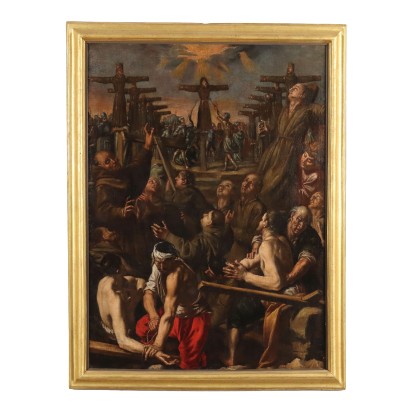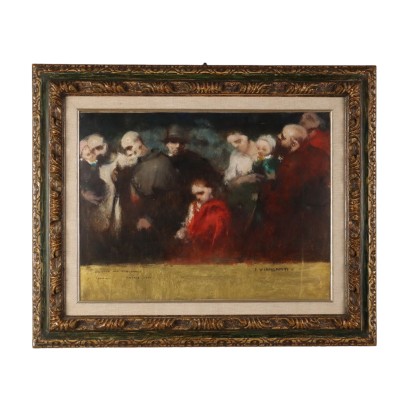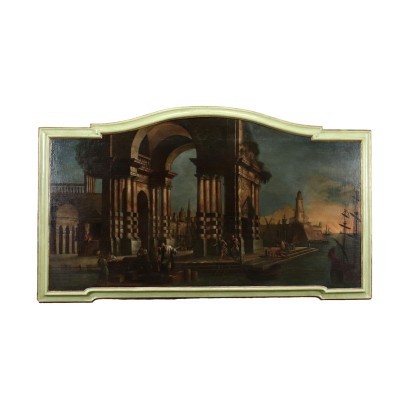ARARPI0234757
Antique Painting Boutique of Tanzio da Varallo Religious Subject
Martyrdom of the Franciscans in Nagasaki
Oil painting on canvas. The work is a faithful copy of the homonymous masterpiece by Tanzio da Varallo (1580-82 /1633), created by the painter from Valsesia for the Franciscan convent of Santa Maria delle Grazie in Varallo, and currently preserved at the Pinacoteca di Brera. The painting depicts the martyrdom which occurred in 1597 in Nagasaki of twenty-three Franciscan friars, who were subsequently beatified in 1627, a date which allows us to place the work in the last years of the artist's activity. Tanzio da Varallo was probably inspired for its creation by the text "Life and exploits of the Martyrs of Japan" by the Spanish Franciscan Marcello di Ribadeneira; of the Brera painting we know a partial preparatory drawing (preserved in the Pinacoteca di Varallo), a sanguine drawing published by Testori (1964) and a canvas (from a private collection in Borgosesia) published by Ferro. The replica proposed here is faithful to the original, even in size, only a few centimeters lower in height, probably lost during the re-lining of the work. Although it is a copy of notable quality, where in particular the richness of highlights stands out which stand out on the warmer and darker tones of the flesh tones, compared to the original one notices a lower fineness of execution, a tendency towards simplification and a pathetic accentuation, which they testify to the hand of a copyist concerned with reproducing the model in every detail, without granting himself any license. Furthermore, this copyist seems to have been very familiar with Tanzio's style, to the point of even perfectly imitating his hooked hands. One can therefore think of a pupil of Tanzio or of his workshop (which was continued by his brother Melchiorre upon Tanzio's death), or of an artist who saw and appreciated his works, such as for example Pietro Francesco Gianoli, who worked above all in churches in Valsesia and in the Novara area and of which other replicas of works by Tanzio da Varallo are known, such as David with the head of Goliath. Furthermore, since the work presented here, before being acquired by a private collector, remained located for centuries in a Franciscan convent in Lombardy, it is plausible that it is a copy of that of Tanzio commissioned by the Order itself, for another monastery, by a painter who was stylistically close to Tanzio and could look to the original. The painting has been relined and restored. It is presented in a late 19th-early 20th century setting.
















